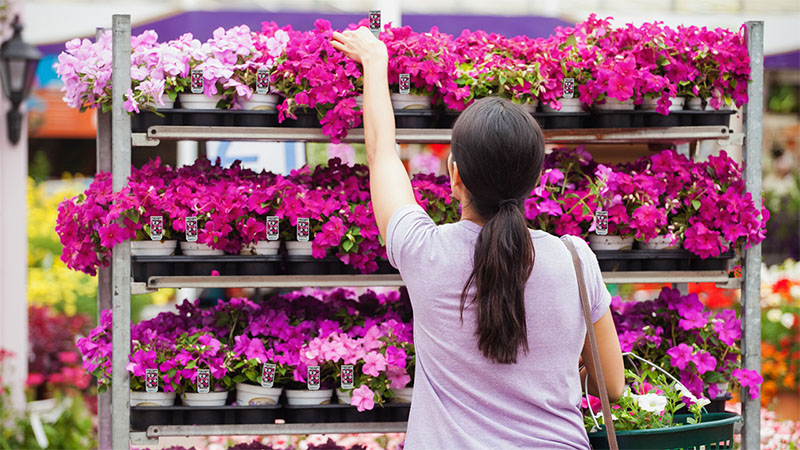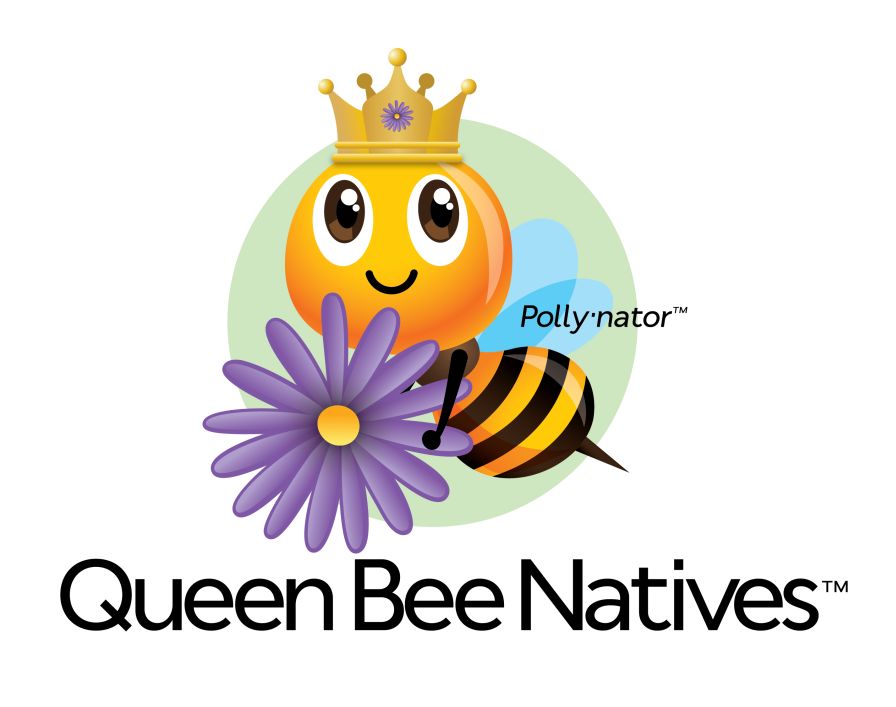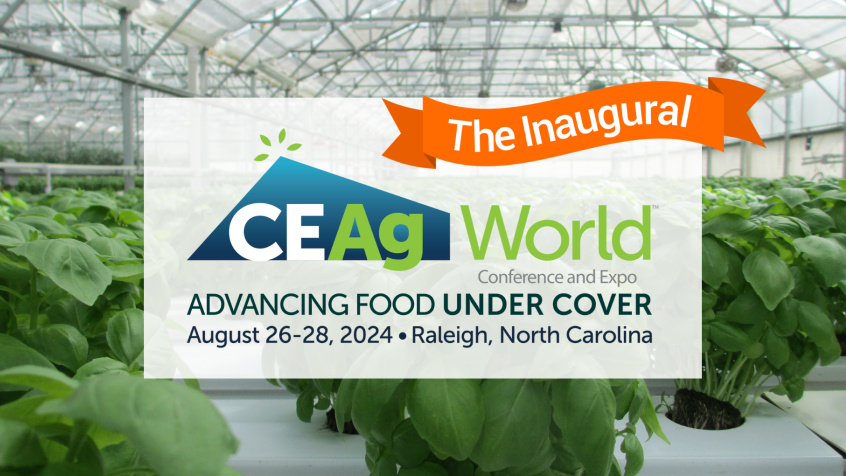Tech Upgrades Help Growers Manage Water and Humidity in the Greenhouse
Ornamental growers are consistently looking to manage their water use and obtain better control of their greenhouse environment. The good news is that a good relationship with your supplier can make that process easier. Here’s what two companies have done recently.
Michael’s Greenhouses Boosts Boom System
Michael’s Greenhouses in Cheshire, CT, is one operation that recently upgraded its irrigation system. Patrick Herzing, General Manager at Michael’s Greenhouses, says the company, no doubt like many others in the industry, was looking to improve on its sustainable use of water by reducing how much of it is wasted.
Herzing says he was able to address three different concerns when upgrading Michael’s boom design:
Inclusion of mist with existing booms in an area for propagation. Herzing worked with Greenhouse Specialists Inc. on the installation of its GTI Boom system, and Dramm, which supplied the mist bar and mist heads.
“This combination gives us better control of both the boom system and Dramm’s Polyrail Fog system,” Herzing says.
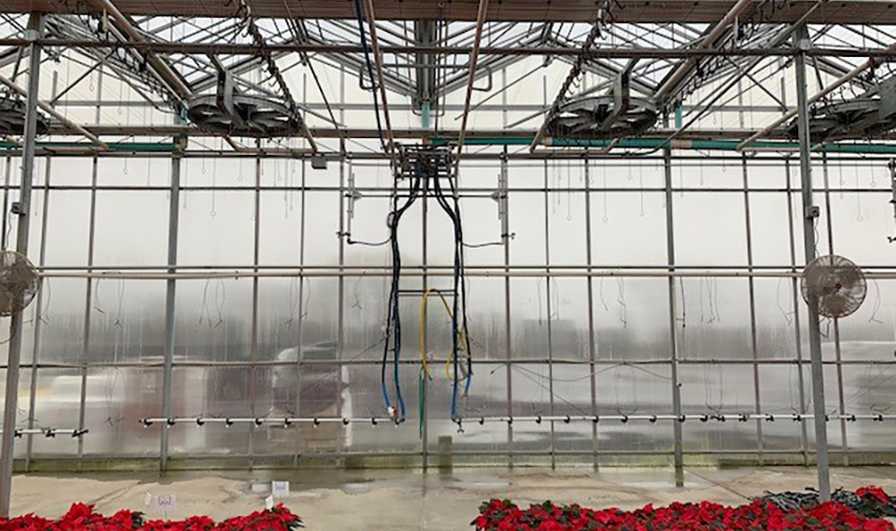
Making the nozzles on its new boom system adjustable to target different size containers allowed Michael’s Greenhouses to stop step-watering. Photo courtesy of Michael’s Greenhouses
Using the booms to spray nematodes and capture hanging baskets as well as the crop below. “With the GTI, we built an additional set of spray booms that run vertically near the top of the boom and can do both with the use of an air bubbler to agitate and a Dosatron injector.” Herzing says.
Making the nozzles on the boom adjustable to target different size containers. “This allowed us to stop step-watering with adjustable distance for the water bar nozzles to reduce waste of water and nutrient feed,” Herzing says.
Fogging Benefits Lead to Expanded Use
Pacific Plug & Liner in Watsonville, CA, made a similar upgrade, but theirs was the expansion of a fogging system.
“We added fog in one of our greenhouses, and after we noticed the benefits, we expanded to at least four full greenhouses in our operation,” says Marlon Carrera, General Manager at Pacific Plug & Liner. “We are working with MicroMyst systems, using two different air compressors to allow the fog to be well distributed in the greenhouses.”
Carerra says the system has helped provide better relative humidity in the greenhouses, which is a big concern in California where the air can be very dry.
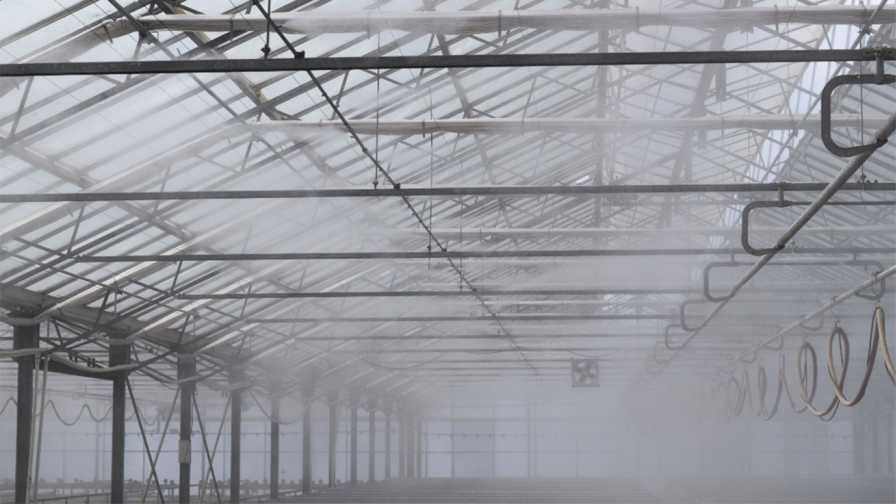
The new fogging system at Pacific Plug & Liner has helped provide better relative humidity in the greenhouses, which is a big concern in California where the air can be very dry.
Photo courtesy of Pacific Plug & Liner
“This system allows (the greenhouses) to sustain relative humidity consistently higher than 60% at all times,” says Carrera, who notes how MicroMyst guided them in installing the system in the first greenhouse.
“We were able to do the rest ourselves, but we have been receiving support every time we need something from them,” Carrera says. “For example, they told us we needed to treat our water before the fog in order to avoid the nozzles getting clogged due to the rust that water produces.”
Suppliers Make Upgrades of Their Own
Bryan Roe, President of Koolfog, says many of the new developments taking place in fogging technology are due to the rising need among growers for permanently installed fog systems for use in automated distribution of pest management, disinfection, and sanitization.
“There is more interest in automation to allow for the safe delivery of chemicals as well to ensure the proper levels and timing of delivery,” says Roe, who notes that amid the COVID-19 pandemic, he and his team are reaching out to growers directly and organizing videoconferences to review what’s possible and how new fogging technology might apply to each individual’s application.
“We are fielding interest from growers looking to upgrade their fogging system units from the use of non-variable frequency drive (VFD) pumps to the new Oasis and Atacama lines that incorporate programmable logic control (PLC) and VFD control for better management of zoning and overall fog output,” Roe says.
One of the concerns Dramm Corp. is hearing more is from growers who recognize the value in automated irrigation but fear that automation means they give up the ability to control when and how much water to apply to their plants.
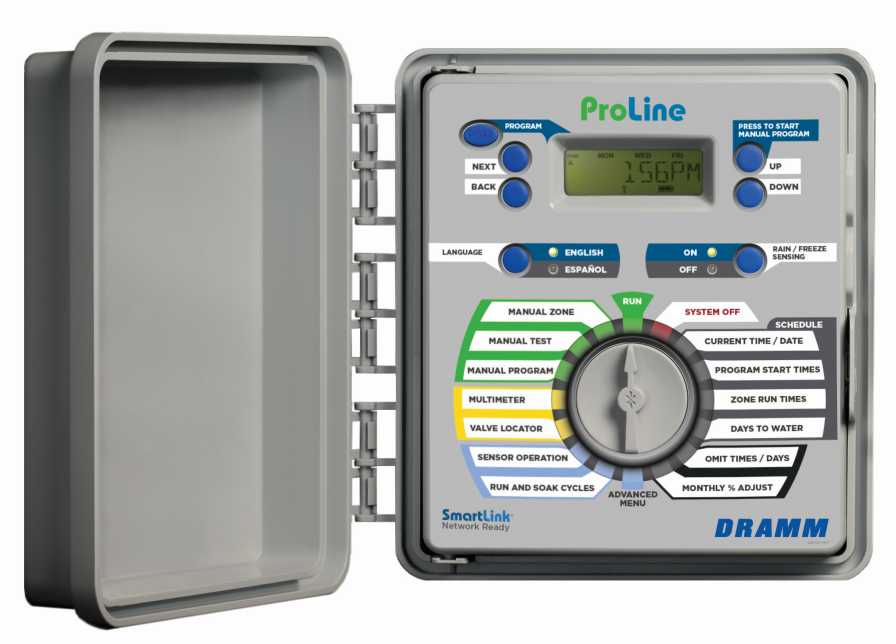
Dramm’s ProLine controller allows valves or zones to be assigned to one of three programs on the ProLine and programmed with preset watering durations.
Photo courtesy of Dramm Corp.
“While an automated system does cede some control of the process, it can be set up in a way that gives more control to the grower,” the company noted in one of its recent blog posts. For example, Dramm’s ProLine controller allows valves or zones to be assigned to one of three programs on the ProLine and programmed with preset watering durations. Each of the programs governs the time and frequency of watering.
The ProLine includes a manual start feature that allows the grower to activate one valve or one program, initiating a sequence of valves to run. Using this feature, the grower gets to select when plants are watered but does not have to stand around turning valves on and off.
Virtual Education Opportunity
During Cultivate’20 Virtual this past July, Dramm offered a series of webinars on topics ranging from ozone and water storage to spray equipment updates. Each webinar was recorded and is available online to watch anytime. Check out the complete lineup at Dramm.com.







